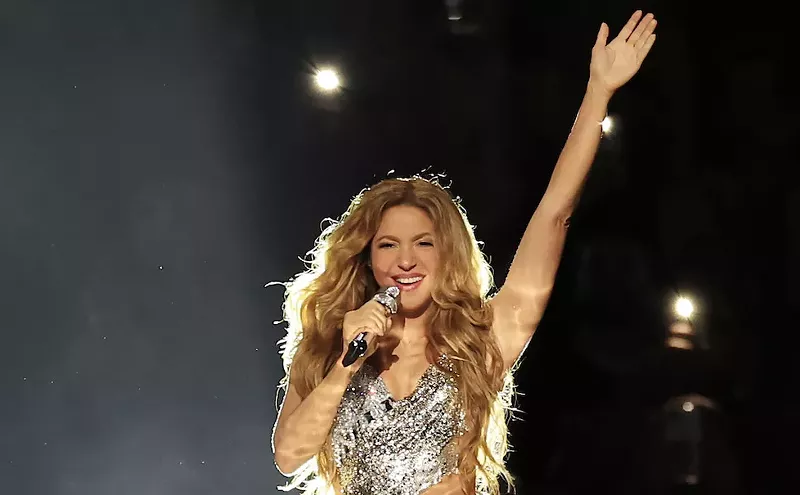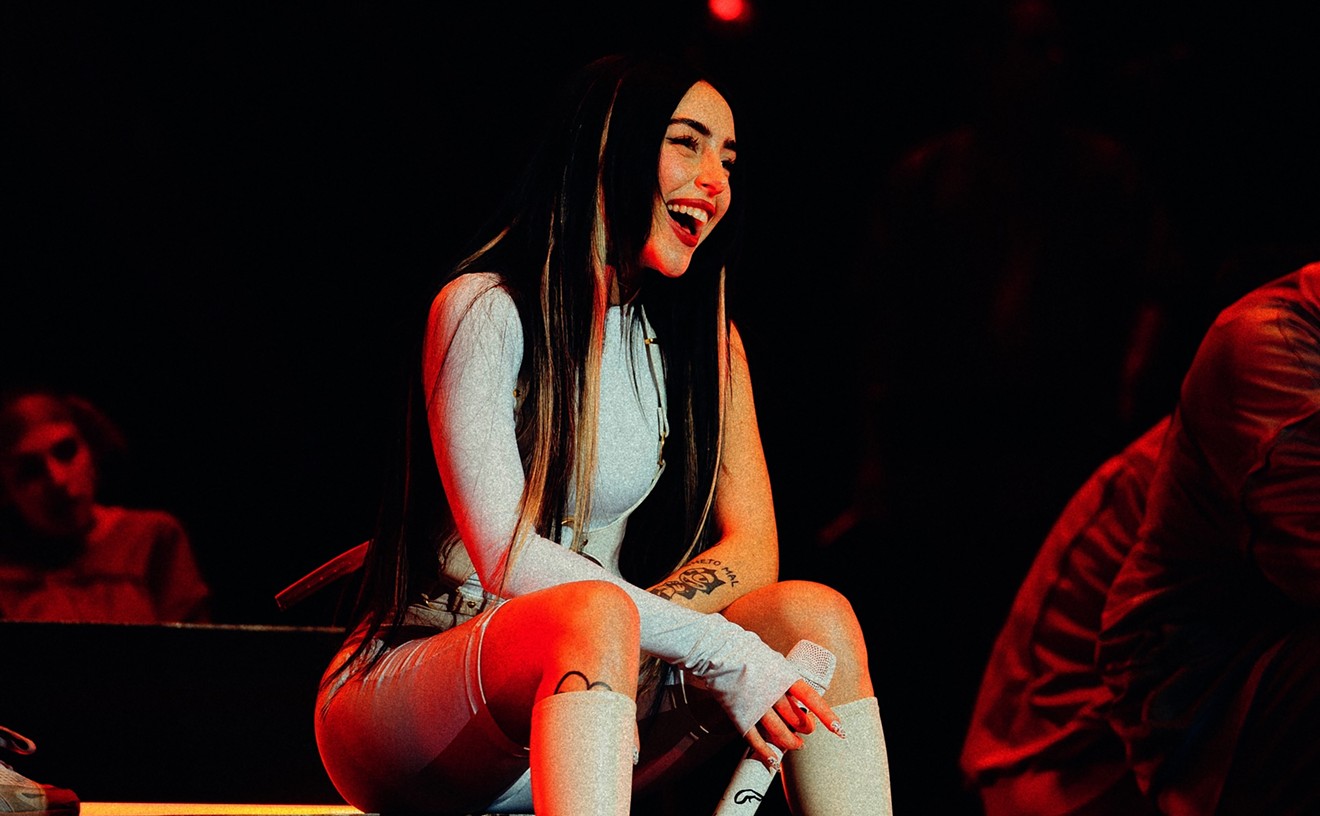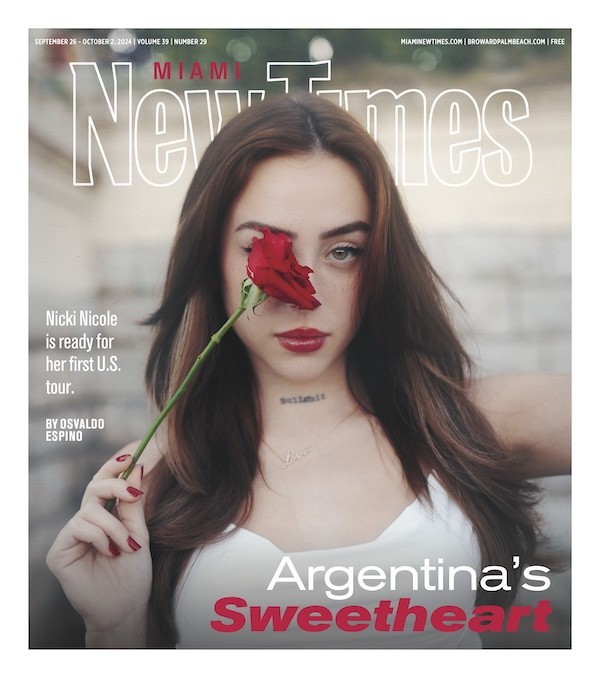Sayonara had been in limbo for the past few years, with the #FREESAYONARA becoming less about the marketing and more of a haunting reality that it might never see the light of day. It was released more than two years after his debut album, Felicilandia, broke into the mainstream along with Díaz's signature sad-boy reggaeton sound, which has also been adopted and propelled by frequent collaborators Mora and Feid.
Since then, album tracks such as "Lentito," "PLN," "Fatal Fantassy," and "1000Canciones" were released as singles far ahead of being officially added to the track list, adding to the speculation that the album being held hostage by Díaz's label.
But the album is finally out in the wild, bumping with tracks like the Feid-assisted "Gatitas Sandungueras Vol. 1" going viral on TikTok and being certified gold by the Recording Industry Association of America.
Díaz's other recent crowning achievements include appearing on the cover of Rolling Stone en Espanol's "Future of Music" issue, which also highlights Rels B, Kevin Kaarl, and Darumas.
With all the hype behind the 28-year-old reggaeton star, New Times spoke with Alvaro while he was promoting his newest project in Mexico City. "It's a place that has seen me grow," he says of the city. "I came here when I only had four songs, and now I'm on all the radio shows."
Díaz adds that he's consistently worked with Mexican talent, including working on his two projects in the country. "I feel like I'm from here — like, Álvaro Díaz, the artist, is from Puerto Rico, but I'm also from here because I've been coming here since the beginning of my career."
When Alvaro first began to make noise, thanks to his 2016 project, San Juan Grand Prix, it was amid the original Latin trap wave that brought artists like Bad Bunny and Anuel AA to the world. Instead of trying to rap solely on gangster beats, Alvaro also gets vulnerable at times, choosing slower, melodic instrumentals that veer closely to R&B.
Fast-forward to 2021's Felicilandia, which featured a broad range of beats and much happier emotions. It was nice, groovy, and, at times, radio-friendly, with songs like the Rauw Alejandro-assisted "Problemón" being a prime example."I was like trying to go somewhere sonically that was more industrial, and that became the beginning inspiration for the project."
tweet this
"Felicilandia was full of colors — and I was like, 'Okay, if Felicilandia is like the good side of love, let's see how it will be like the dark side of love,'" Díaz explains.
Enter Sayonara, a project that is a continuous medley of tracks with heartbreak at the center. Not only does it have funky, almost Kaytranada-like instrumentals like the one found on "PLN" — a track about finding a new girl in the midst of your post-breakup glow—but it also features slow, emotional guitars and Nine Inch Nail industrial drums on the track "Quién Te Quiere Como El Nene."
"I was like trying to go somewhere sonically that was more industrial, and that became the beginning inspiration for the project," he says. "It kind of came out perfectly because I was able to tell my story with this album."
The album's narrative heartbreak touches on finding someone new or a sneaky link in the club, realizing that you may never get over your ex, and the final goodbye — or sayonara — to someone you used to love.
Among Sayonara's standouts is the melodically happy but lyrically sad "Ramona Flowers." Named after the manic pixie dream girl protagonist from the Scott Pilgrim franchise, the song was originally released in 2022, only to pick up steam again once it was officially added to Sayonara.
"Believe me, I had this intuition that people didn't love it as much the first time, so I put it on the album because it's part of the history of the album as well as the story of the album," Díaz shares. "I was hoping people would give it a second chance once it was added."
That intuition paid off as the song is getting traction on TikTok thanks to users dancing to the lyrics "Baila, baila mentirosa," along with the Netflix-produced Scott Pilgrim series that has attracted a new generation of fans.
"I work with this group called Lara Project a lot. Felix and Manuel, those are my brothers from Venezuela. They were showing me beats one day, and I remember hearing this beat with this bass riff and the simple chords and the drum pattern. It gave me this Blink-182 vibe, but this Alvarito vibe," he says, explaining how "Ramona Flowers" came together. "I remember I had watched a Joy Division documentary at that time, so I was into this pop-punk vibe. I was like, 'Bro, Felix, can I have this beat, please? I promise to do something special with it.' And he was like, 'Okay, you can have it,' and in one week, I remember I wrote the hooks and verses.""Even though you might not be making rock or punk, Blink-182 are just so inspirational, no matter the genre."
tweet this
While it's hard to believe an artist who emerged from Puerto Rico, the epicenter of reggaeton, would want to make a pop-punk track, when prompted, Díaz will quickly rattle off his three most influential artists: Zion, Kanye West, and Blink-182.
"I don't know if they really know how impactful they are for our generation, like music-wise," Díaz explains. "Even though you might not be making rock or punk, they are just so inspirational, no matter the genre. Tainy is a massive Blink-182 fan, too, and so is Albert Hype. He's this super producer from Neon 16 that produced 'PLN.'"

Álvaro Díaz incorporates a wide variety of inspirations on Sayonara, from pop-punk to industrial.
Photo by Daviel González (OMS Design)
"I couldn't believe it. I was watching them on Friday night, and what kind of sucked was that I couldn't go ham with the singing because I had to take the stage the next day. I had to save my energy for the show, but I really had fun," he says. "It was magic for me. I still like to watch the videos that I have on my phone of that day."
Earlier the month, Díaz took his MacBook to the Apple Store at Brickell City Centre for a repair when he asked the Genius Bar employee if he had to back up his hard drive before handing it over. The employee insisted he did not, only for Díaz later to realize that his computer had been wiped clean. The MacBook contained the files for his upcoming project.
An angry Díaz took to Instagram Live to vent about the situation, teasing his fans with free merch for whoever left the best one-star Yelp review on the store's page. (Yelp eventually suspended users' ability to review-bomb the store.)
So, what was the world deprived of hearing? "A lot of personal things in verses that didn't even make sense," says a more level-headed Díaz. "I remember there was a verse where I'm crying. I was sad one day, and I like freestyle, and I didn't hear that at first."
After cooling off, Díaz views the incident more as an annoyance than something to get angry about.
"I'm frustrated, but at the end of the day, I have a great team that's just extra motivated now to create new ideas," he says. "I know that we will be able to deliver once the time is right."












